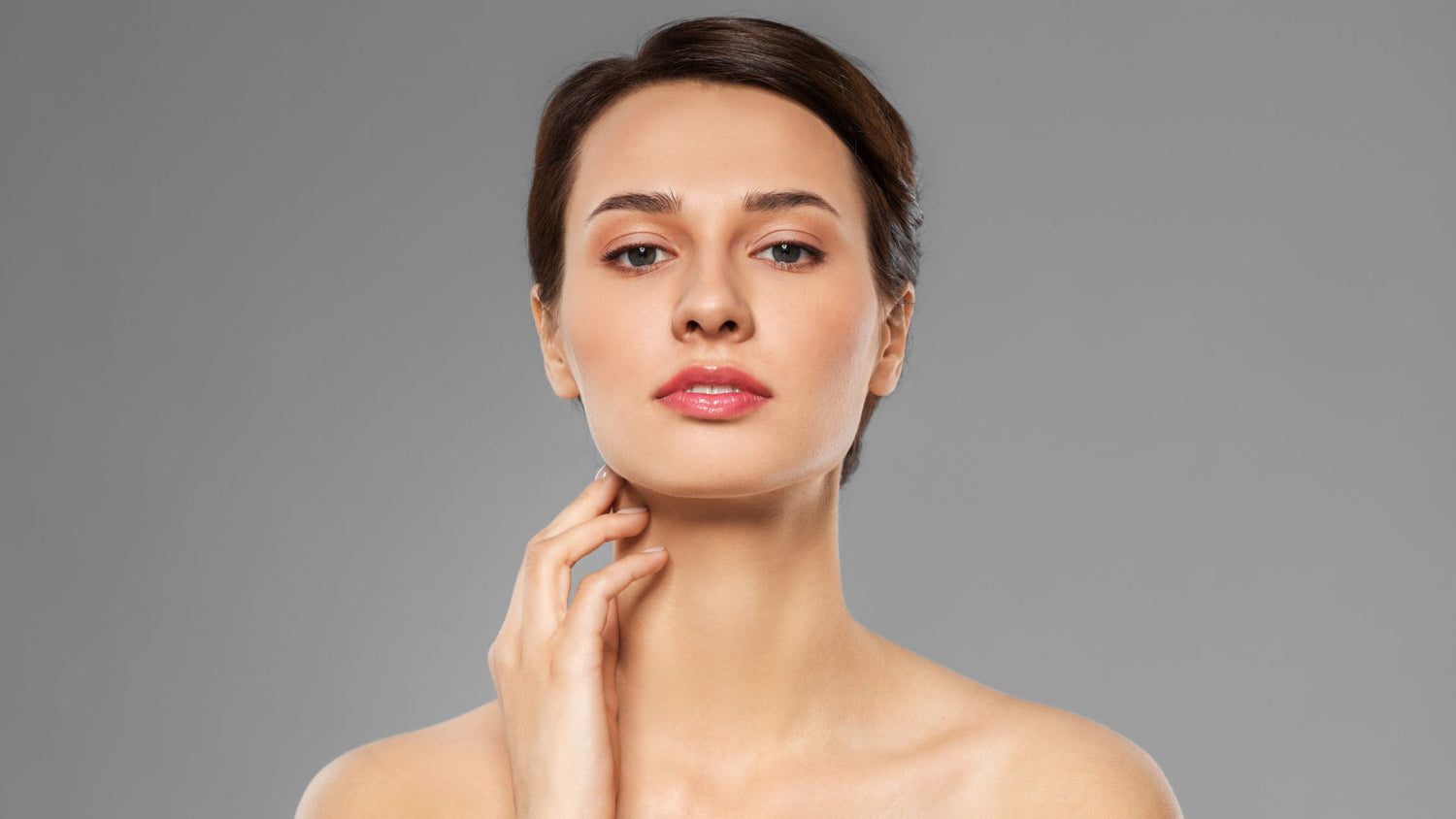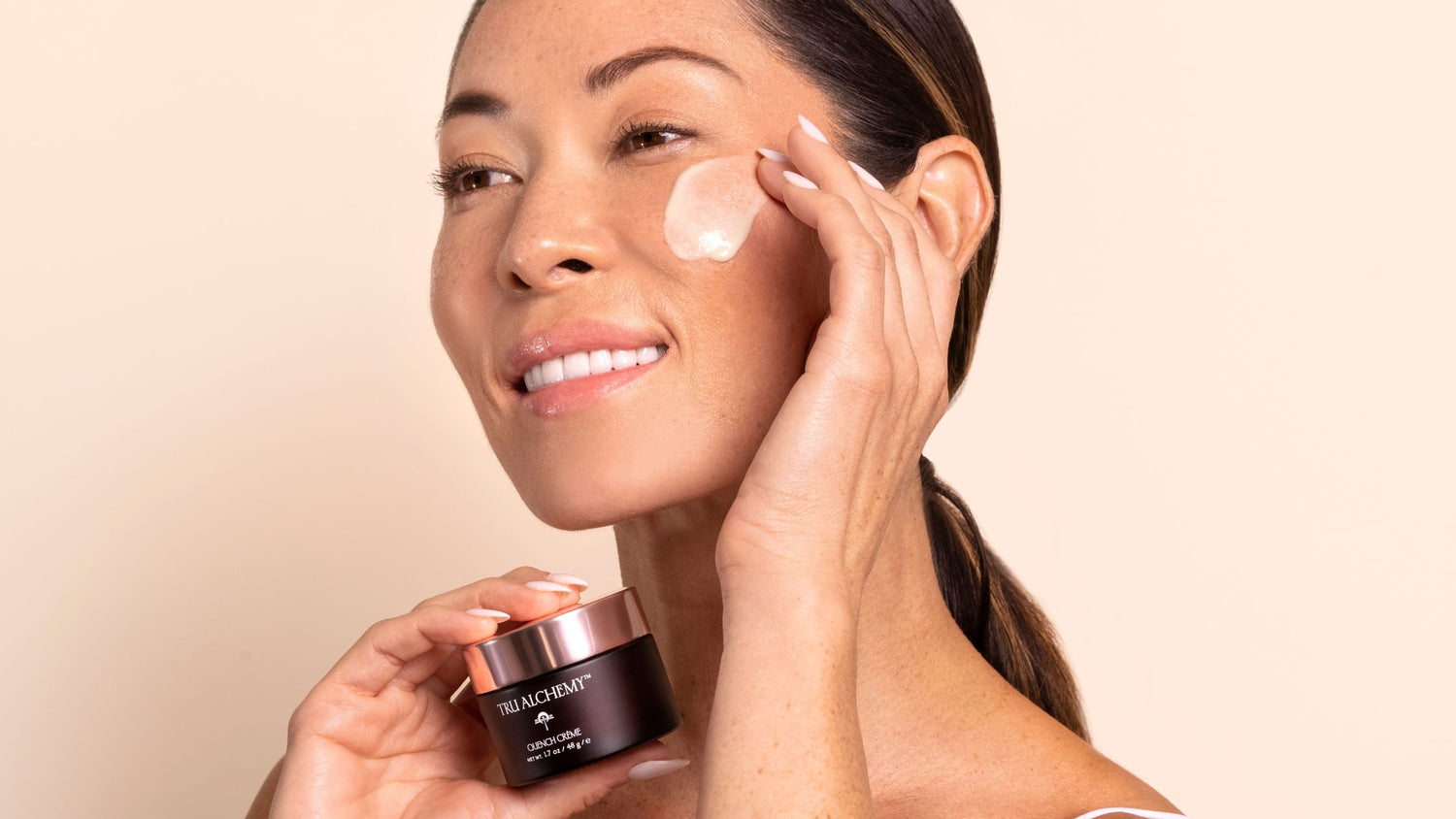
SPF: Understanding the Power of Sunscreen for Radiant Skin
Curtis BradshawEnter the realm of SPF—a shield against the sun's rays. With so many SPFs on the market, it can be dizzying to decide which is best! SPF generally falls into two categories: chemical sunscreen or mineral based.
Both types of SPFs have unique protective properties. However, there is a common wisdom among dermatologists and estheticians alike when it comes to SPF: the best one is the one you wear regularly, every day. Let’s unpack how to decide between the two.
Understanding SPF
What Is SPF?
SPF stands for Sun Protection Factor. It’s a numerical rating used to measure the level of protection provided by sunscreen against the sun's ultraviolet (UVB) rays. These are the rays associated with a sunburn.
The SPF rating indicates how effectively sunscreen can offset sunburn compared to unprotected skin. For example, it typically takes 10 minutes for your skin to start turning red in the sun without sunscreen, but using an SPF 30 sunscreen would potentially provide protection for about 30 times longer.
Here's a breakdown of what the SPF numbers mean:
SPF 15 Provides moderate protection. It blocks approximately 93% of UVB rays.
SPF 30 Offers high protection. It blocks about 97% of UVB rays.
SPF 50 Provides very high protection. It blocks about 98% of UVB rays.
SPF 50+ Occasionally, you might see sunscreens labeled as SPF 50+ or higher, but they generally don't provide a significantly higher level of protection.
UVA vs. UVB Rays
UVA and UVB rays are two types of ultraviolet radiation emitted by the sun.
UVA rays have longer wavelengths and can penetrate deeper into the skin, contributing to aging, wrinkles, and discoloration.
UVB rays have shorter wavelengths and mainly affect the skin's outer layer, causing sunburn.
Choosing the Right SPF
Factors to Consider When Choosing an SPF Level
When choosing an SPF level for your sunscreen, whether mineral-based or chemical, consider your skin type and sensitivity, the temperature and weather conditions, activity level, and the duration of sun exposure.
Understanding “Broad-Spectrum” Sunscreens
It's important to note that SPF numerical labels on a sunscreen product only measure protection against UVB rays. For comprehensive sun protection, it's crucial to use broad-spectrum sunscreens. Broad-spectrum refers to the ability to protect against both UVA and UVB rays. Make sure to look for “broad-spectrum” on labels from the US and PA++++ on Asian sunscreens.
Some formulations also protect against blue light, which can lead to occasional discoloration over prolonged periods of exposure.

How to Apply SPF
Prepare the skin
Gently cleanse your face and follow with a hydrating moisturizer like our Tru Alchemy Quench Crème. This initial step sets the foundation for proper sun care.
Apply Sunscreen Evenly and All-Over
Take a generous amount of your favorite SPF—don't be shy; this is a moment of abundance—and work it evenly into the skin completely 15 to 20 minutes prior to sun exposure. This gives the sunscreen time to absorb.
For day-to-day use where you’ll have brief or intermittent sun exposure, apply an SPF of at least 30 to your exposed areas of the body.
While the face and neck are key areas for sunscreen, it’s important to protect your décolleté or neckline, behind your ears, and the back of your neck if you wear your hair up or have short hair, and your chest, arms, and hands. If you're going to be active out in the direct midday sun for a long duration, make sure to completely cover all areas of the body and to use an SPF lip balm to protect your lips!
How Much to Apply
Use about a nickel-sized dollop for your face and more for larger areas like your arms and legs.
It’s a good idea to combine the frequent reapplication of your SPF with hats, sunglasses, and light, breathable layers of protective clothing.
Sunscreen generally needs to be replied about every 90 minutes when used in direct, bright sunshine. Always read the package for specific guidelines.
The Science Behind SPF
Physical vs. Chemical Sunscreen
What is physical sunscreen?
Physical sunscreen, or mineral-based sunscreen, contains ingredients such as zinc oxide and titanium dioxide. These form a physical barrier on the skin's surface that reflect the sun's UV radiation, protecting our delicate skin.
All mineral sunscreens offer natural broad-spectrum protection. This shields us from both UVA rays, known to prematurely age the skin, and UVB rays, responsible for sunburn.
One of the best qualities of a mineral sunscreen? It provides immediate protection upon application, ensuring an instant shield of defense! It’s also gentle on sensitive skin, making the formulas great for those who seek a dense defense against the sun with less irritation.
One common drawback and critique of traditional mineral sunscreens are the chalky white cast they can often leave behind, making them not user-friendly for diverse skin tones. Luckily, more modern formulations are becoming more sheer or even translucent.
There’s also the option for tinted mineral sunscreens, which can neutralize the ghostly white cast effect, camouflaging protection while providing slight cosmetic coverage.

What is chemical sunscreen?
These formulas are prominent in popular K-beauty and Japanese SPF lines. They contain various active ingredients, such as avobenzone, octinoxate, oxybenzone, and others, each targeting specific UV wavelengths.
Unlike physical sunscreens that form a protective physical barrier, chemical sunscreen works uniquely by absorbing the UV rays' energy and converting it into a form of heat that doesn't harm your skin. This heat is then released from the skin.
One of the most appealing qualities of chemical sunscreen is its lightweight texture which comes in many different formulations like gels, creams, serums, and mists. It blends into the skin seamlessly, like a delicate and invisible shield.
Understanding “Water Resistant” vs. “Sweat Resistant”
If you’re participating in water-based activities, like swimming or paddle boarding, you’ll want to choose a water-resistant sunscreen. Water-resistant sunscreen will note the amount of time it will provide protection.
Sweat-resistant sunscreen is best to use when exercising or when the temperatures are sweltering. Not all water-resistant sunscreens are sweat resistant, so remember that sweat can break down sunscreen.
If you're doing both, it's good to use a sunscreen that's both water and sweat resistant, making sure to reapply after the time on the label and about every two hours.
Concerns About Chemical Sunscreen Ingredients
While chemical sunscreens are highly effective at protecting us from the sun's rays, there are a few concerns that people may want to be aware of:
Skin Sensitivity. Some individuals with sensitive skin might experience mild irritation to some chemical sunscreen ingredients.
Environmental Impact. Certain ingredients, like oxybenzone and octinoxate, can be harmful to marine life when they wash off into the ocean. As a result, some regions like Hawaii have banned the use of certain sunscreen ingredients to protect coral reefs.
Photodegradation. Some chemical sunscreen ingredients can break down and become less effective when exposed to sunlight over time. This can lead to a decrease in their sun-protective abilities, which is why regular reapplication is key.
SPF and Skin Health With Dr. Ilyas
Below, we have insights from Dr. Ilyas, Board Certified Dermatologist, and Tru Alchemy partner, on the best preventative approach, as well as how we can fade visible signs of the sun on our complexion.
Cumulative effects unfold gradually through repeated sun exposure, with UV rays impacting our complexion in different ways, both short-term and long-term. Regular sunscreen application is the best defense and maintains a youthful complexion.
In conversation with Dr.Ilyas, we asked her for her top 3 tips for summer skincare.
“In the summer, your skin can be exposed to frequent ultraviolet light, often inadvertently, when driving or spending more time outdoors. Remember these skincare tips for the summer.
1. Wear sunscreen daily. Sun exposure through walking, driving, gardening, and yardwork can take a toll on your skin.
2. Reapply sunscreen if spending time outdoors to make sure it is working.
3. Take the time to care for your skin during your evening skincare routine. Our skin rejuvenates overnight and needs the optimal environment to do so.”

That being said, one thing most of us want to know is if we can reverse the effects of the sun.
Dr. Ilyas says, “Oftentimes, it's the appearance of complexion changes that we might experience with the signs of UV exposure.”
In regards to skin concerns, you should prioritize high SPF broad-spectrum sunscreens and pair it with powerful skincare ingredients like niacinamide, vitamin C, and glycolic acids.
To reduce the appearance of mild discoloration and reveal an even-toned complexion, we love our Spot Check serum. This potent formula targets dark spots with brightening white shiitake extract and a gentle tridoxy blend of acids. The unique blend lifts away dull surfaces.
Dr. Ilyas says, “Some skin concerns can be challenging to address with numerous ingredients on the market to navigate. With so many options, I have found my patients using several products in an effort to capture the benefits of various ingredients. Spot Check combines a number of ingredients into one product making it a simple go-to recommendation to complement your skincare routine.”
You’ll want to avoid heavy emollient-based suncare that can clog pores and exacerbate breakouts while still protecting your skin. A daily serum like Spot Check in tandem with suncare, can help keep skin lightly exfoliated, minimizing clogged pores and maintaining a clear-looking complexion.
Frequently Asked SPF Questions
What are common SPF misconceptions?
Common misconceptions include thinking that sunscreen is only needed on sunny days (UV rays can penetrate clouds), that higher SPF guarantees all-day protection (reapplication is always necessary), and that makeup with SPF alone is sufficient for sun protection. You must always apply a base of sun protection under your makeup, even on cloudy days.
Do I need SPF higher than SPF 50?
SPF 30 filters out about 97% of UVB rays, while SPF 50 filters about 98%. Higher SPFs offer only marginally increased protection. The key is proper application and reapplication.
Are mineral sunscreens superior?
Both mineral and chemical sunscreens have pros and cons. Mineral sunscreens (zinc oxide, titanium dioxide) are often gentler for sensitive skin, while chemical sunscreens might offer more lightweight options. Choose based on skin type and personal preference.
Final Thoughts
We believe that skincare is more than just a routine—it's a soul-nourishing ritual revealing inner radiance and embracing the luminous world around you. Whether you choose a mineral or chemical SPF, sun protection is the ultimate form of skincare, like giving our skin a shield to bask in the sun's glow while preserving the radiance of our skin for years to come.



